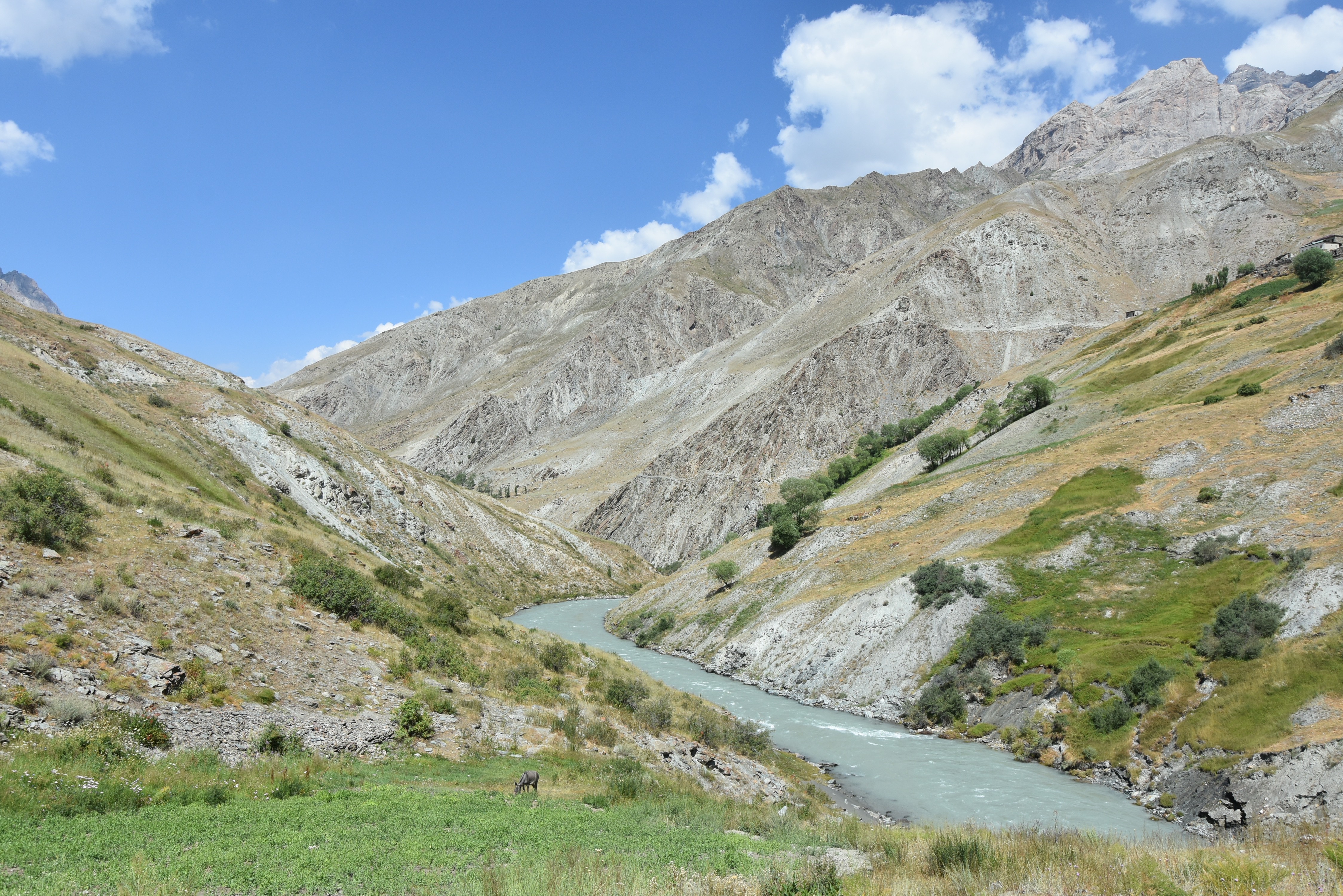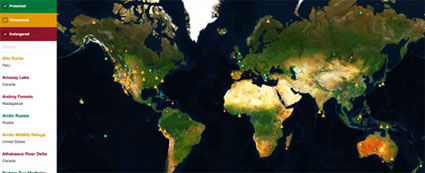
Yaghnob National Natural Park
| Status | Protected |
| Country | Tajikistan |
| Report By | Abduvohid Safarov |
| Thanks | Saifiddin Mirzozoda and Kyra Busch |
| Posted | August 12, 2020 |

When Soviet forces forcibly relocated the Yaghnobi from their mountain valley in what is now Tajikistan, the Russians were unable to crush the spirit of the people. Their cultural lifeblood remained in their homeland, and they have since returned to create the Yaghnob National Natural Park to protect their ancient cultural landscape.
The Yaghnobi People
The history of the people inhabiting Yaghnob Valley in Tajikistan has common roots with formerly powerful Sogdiana—an ancient state of Central Asia from the 6th century BC to the 7th century AD—a closeness revealed by the similarity between the ancient Sogdian and Yaghnobi languages. The natural isolation of the Yaghnob Valley appealed to the Sogdians as a safe place to live. Both languages belong to the Eastern-Iranian language branch and were slowly assimilated by peoples of the Western-Iranian language, and after that by Turkic-speaking peoples. Arabian invaders propagating Islam arrived later and basically wiped out literary texts and cultural monuments of the Zoroastrian Sogdians.
Yaghnob presents a unique situation, as approximately 3,000 people inhabit a very restricted area. Native speakers of the Sogdian language and bearers of the ancient culture have managed to avoid assimilation during many centuries, right up to 1970, when the Yaghnobies were forcibly evicted from the valley.
During 1970 and 1971, Soviet authorities deported the entire population of the Yaghnob Valley to the cotton plantations around Zafarobod on the northwest border between the Tajik and Uzbek Soviet Socialist Republics. The deportation was both politically and economically motivated. The fact that the Yaghnobies’ remote location had allowed them to effectively resist Soviet authority coupled with the pressing economic need for laborers in the cotton fields motivated the Moscow government to force the Yaghnobi people from their mountain homes at gunpoint and fly them by helicopter to grow cotton in irrigated desert land. The population of the Yaghnob Valley at that time numbered between 3,000 and 4,000. Due to the harsh desert climate with temperatures over 105 degrees Fahrenheit, inadequate housing, lack of sanitary drinking water, and exposure to tuberculosis, between 400 and 700 Yaghnobies died during their first year in Zafarobod. During the first few years some of the Yaghnobi fled back to the Yaghnob Valley only to be deported again.
In 1990, the Dushanbe-based Council of Ministers passed a resolution to reestablish all villages from which people had been deported. Tajikistan became an independent country in 1991. Since independence, the government of Tajikistan has promoted national awareness of the country’s Sogdian heritage as part of an effort to construct a new national identity. Although the Yaghnobi are now permitted to return to live in the Yaghnob Valley, only about 500 have done so since all of the homes had been destroyed and the valley is lacking infrastructure and economic base. About 4,500 Yaghnobis remain in Zafarobod, the largest Yaghnobi population center. In spite of the suffering and hardship they have experienced they have retained much of their culture and continue to speak Yaghnobi as their first language.
Though most Yaghnobis today are Muslim, the Zoroastrian values of “good thought, kind word, good deed,” live on in the Yaghnob Valley. Likewise, rituals honoring fire continue. Offerings are left at mazars—holy places, springs, and tombs of revered saints. In one of the most ancient and revered places of Yagnob—Mazar Hatti Mullo in the village of Sokan—a curious rite is performed during which a person walks three times around a stone, a building and a massive column located on the territory of the mazar. After each round of the column, which is polished to a shine, people embrace it and clasp hands so their fingers hopefully join. Local belief says that if your fingers converge your desire will be fulfilled, but if your fingers do not link (because the trunk of the column has grown thicker) then you can expect trouble.
The Land
The Yaghnob River is a part of the Zeravshan river basin. It is 130 km long and is referred administratively as the Aini district of Sughd region. The river originates in a high-mountain valley of the same name situated between the southern slope of the Zeravshan range and northern slope of the Hissar range. In the upper reaches of the Yaghnob River, maximum elevation of the surrounding mountains is more than 5,000 meters above sea level and elevation of the river drops from 2,800 to 2,200 meters, i.e., the elevation change between the upper and lower ends of this steep, narrow valley is roughly 3,000 meters.
The valley of the Yaghnob River is situated in the middle part of Central Asia, at the border between mountains and desert plains. It has long been influenced by great historical events, wars and invasions, but its isolation protected the Yaghnobis traditional way of life, methods of natural resource use, and language. The remote valley is inaccessible for six months of the year.
The Yaghnob Valley represents an example of an “isolated peripheral area,” very typical for the highlands of Central Asia and especially for Tajikistan, where each mountain valley has its own unique ethnic and cultural style of life and land use structure, highly adapted to natural conditions. The upper portion of the valley is a refugium of the Yaghnobi ethnos and its environment—a naturally isolated, ancient cultural landscape, with a highly adaptive economy.
For generations in Yaghnob Valley, religious practices played an important role in passing on traditional ecological knowledge. The word “ubol” is derived from old Persian and literally means “tabu.” Ubol are distinctive rules enforced by everyone. Each tabu serves the purpose of knowledge transfer to youth and many involve sustainable resource use. Ubol includes restrictions on hunting species during the breeding season of most animals, giving species a chance to restore their populations. Ubol also includes restrictions on cutting trees and rules to prevent inappropriate behavior.
From ancient times the Yaghnobi emblematic crop was wheat. Today’s is barley. The future seems to belong to the potato.
Species diversity of agricultural crops in Yaghnob is limited. Grain legumes are represented by barley (which covers 90% of the farmed area), peas and wheat. All crops are summer ones without exception. Winter crops are not cultivated since they either rot on north-oriented slopes or freeze on south-oriented slopes. Summer wheat belongs to the variety Yaghnobies call “sourkha”—which means reddish. Two varieties of barley are sown—a common one, in a hull, with a seed coat, and a hull-less one (so-called Himalayan corn).
Potato growing was introduced in Yaghnob only after World War II and became widespread due to its high productivity. Potato growing requires the field slope to be relatively gentle with all stones removed from the soil. Properly maintained, potato productivity can be very high. Potato fields are generally situated close to villages and even within their limits.
Food Culture
Long experimentation with plants in the Yaghnobies’ immediate surroundings, as well as intuition and revelations by their ancestors, determined what could be regarded as food. Hence, classification of plants into food and medicine came as a result of experimentation by Yaghnobi ancestors in order to survive and pass on the knowledge to the next generation. Throughout these struggles, the Yaghnobi people never separated food from medicine. Unfortunately, most of this knowledge was lost due to the displacement of Yaghnobies in 1970s.
In Yaghnobi communities, the process of acquiring food is enshrouded in spirituality and physical considerations that ensure the continuous existence of peace, harmony and sanctity in nature. Sustainability of the environment is one of the critical issues in food acquisition and consumption. Such considerations are connected to the belief that humans are linked to the earth, hence their continued existence depends on the reverence accorded the earth.
Remembering their traditional knowledge, Yaghnobies, slowly began to rely on using locally available materials after returning to their ancestral land in 1990s. More than 30 plant species are used as medicinal plants in food preparation.
Yaghnobi food culture is derived from traditional knowledge grounded in their worldview. Visitors to their community are treated to a traditional dish called oliba, which consists of flour, butter, kefir and several types of spring herbs. As oliba is savored with homemade milk, visitors listen to the amazing story of Yaghnobi ancestors who survived invasions of foreigners and nomads who destroyed the valley oases.
For the last ten years, considerable effort has been directed to raising awareness about Yaghnobi ecological and spiritual heritage through the promotion of a biocultural heritage territory. The common efforts of the Yaghnobi community, a local NGO known as “PO Anahita,” the Tajikistan government and other stakeholders resulted in the creation of Yaghnob National Natural Park in May 2019.
The park was created to preserve and restore natural complexes that have a special ecological and cultural value, to preserve the unique Yaghnobi language and cultural heritage, to develop ecological tourism, to conduct research, and to achieve sustainable use of natural resources. It opened new possibilities for biological and cultural diversity conservation in the Yaghnob territory. The Yaghnobi community and Tajik government agencies are currently developing a co-management plan for the new park.
Resources
Donovan, Leslie. 2007. Causes and Consquences of 1970-1971 Forced Migration of the Yaghnobis in the Tajik SSR. MA Thesis. California State University, Dominquez Hills.
Gunya, Alexi. 2002. Yagnob Valley – nature, history, and chances of a mountain community development in Tajikistan.
Continue Exploring Sacred Sites
 Explore a world of sacred lands and discover more than 100 site reports using our interactive map.
Explore a world of sacred lands and discover more than 100 site reports using our interactive map.